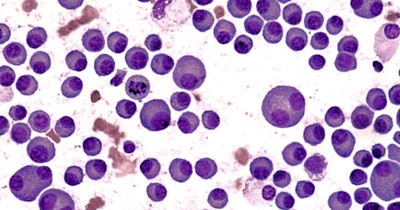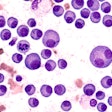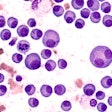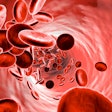
Researchers have developed a calculator tool that identifies patients with more benign forms of two blood cancers: multiple myeloma and primary amyloidosis. The research, published March 17 in the Journal of Clinical Oncology, indicates that this tool could become part of the diagnostic workup of such patients, and help individualize their treatments.
Multiple myeloma, which forms in plasma cells, is the second most common hematological cancer. About 50% of people with smoldering myeloma, an asymptomatic precancerous condition, progress to active multiple myeloma within the first five years. However, after five years, the risk decreases. Although multiple myeloma is considered incurable, some people never develop symptoms or need treatment.
Primary or light chain amyloidosis is a very rare hematological malignancy with low survival rates. This protein misfolding and metabolism disorder can cause organ dysfunction and eventually death; therefore, early detection is crucial.
Researchers hypothesized that some patients with both smoldering and active multiple myeloma, as well as light chain amyloidosis, could have a phenotype associated with favorable outcomes, called monoclonal gammopathy of uncertain significance (MGUS).
The open-access algorithm generated by the researchers based on simple flow cytometry parameters stratified patients into multiple myeloma-like, intermediate, and MGUS-like disease, the latter being systematically associated with lower rates of disease progression.
The online tool allows any hematologist in any location to similarly classify their patients using routine flow cytometry, which discriminates between residual normal plasma cells and tumor cells with high accuracy.
The researchers utilized data generated by cancer clinics and hospitals over ten years from both asymptomatic and active multiple myeloma patients. They found the subgroup of asymptomatic individuals, even those with other risk factors, had a very low probability of progression.
Meanwhile, in the subgroup with both active multiple myeloma and benign profiles, 80% of patients showed progression-free rates five years after intensive treatment with autologous transplant. Surprisingly, stopping treatment did not increase the risk of progression, even in patients who had not achieved complete remission. Therefore, this calculator could be useful in identifying patients in whom a partial response to treatment may not be considered suboptimal; given this information, such patients might avoid overtreatment.
The researchers concluded that, by using the proposed algorithm based on flow cytometry, finding an MGUS-like phenotype will help to accurately identify and determine the prognosis of patients with low-risk MGUS, resulting in less extensive diagnostic procedures. Moreover, this test for the first time could help identify patients with light chain amyloidosis.
“Our calculator is the result of more than a decade of cooperative work in Spain and collaboration with other international centers. We are now making it available to the scientific community to improve the management of patients with multiple myeloma and light-chain amyloidosis in the routine clinical practice,” said co-author Dr. Bruno Paiva, oncologist at Cima University of Navarra, in a statement.
The tool is freely available at www.mgus-like.com.

















